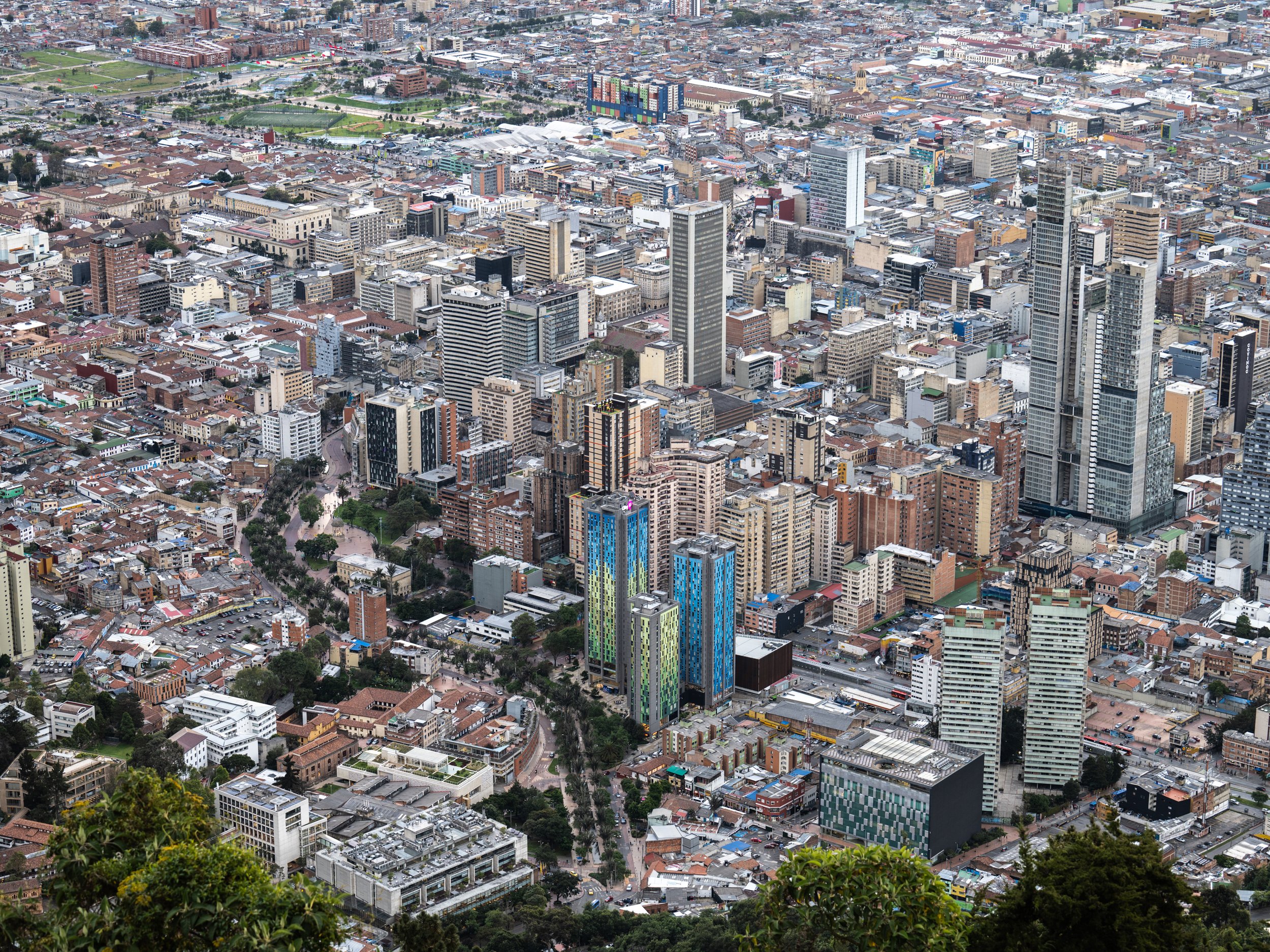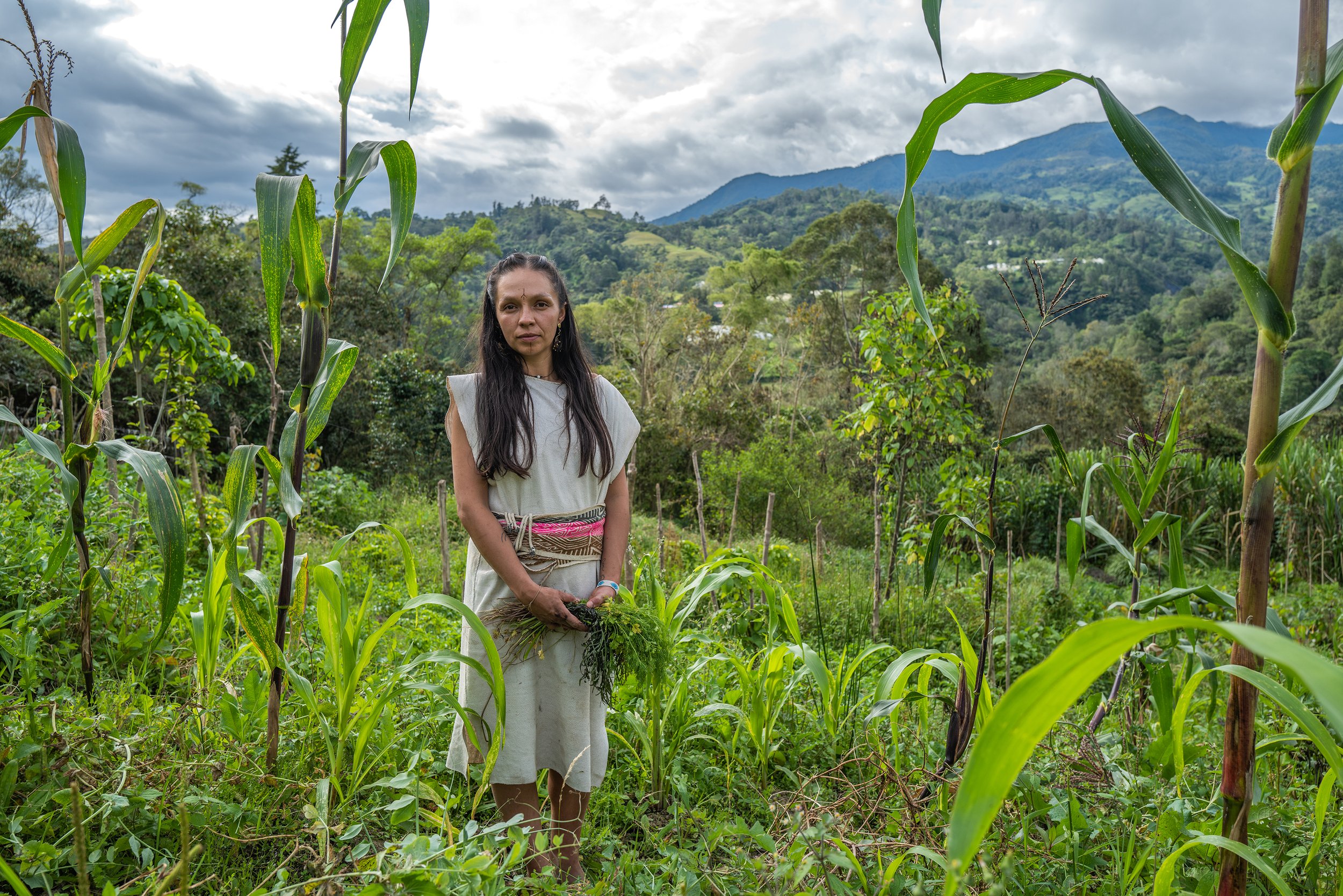Learning to walk gently with one another
WORDS AND IMAGES BY RUDOLPH FRANK II
EDITED BY TAMARA BLAZQUEZ HAIK
“In order for us to keep our ancestral culture alive, we must at all costs do what needs to be done to pay respects to those who lived before us and to protect Mother Earth.”
In the prophecy of many Indigenous communities of what is known as Latin America, the Knowledgekeepers of the Earth foretold a time when people from the four directions of the world would come together. This prophecy is known as that of the Condor and the Eagle, where the Condors are the protectors of the lands in the South of America while the Eagles protect the North.
As explained by Buntkua Yari Maku, Knowledge Keeper of the Muysca Fowe Community in the Colombian municipality of Fomeque, the North, now marked by the extractive energy of colonization, has lost sight of its agreement with the land, harming the Earth instead of protecting it. Yet, there is a prophecy, which was shared by the Muysca and Wiwa Nations with attendees of PWB’s Storytelling School Colombia while they were visiting the municipalities of Fomeque, Rongoy and Bogotá: the coming together of the South and the North, the Condors and the Eagles, will grow a mutual collaboration and renewed relationship with the land, bringing healing to what was once broken.
The Muysca Confederation inhabited the Altiplano Cundiboyacense (a high plateau located in the Eastern Cordillera of the Colombian Andes) long before the Spanish empire dispatched the conquistadores in 1537. Bogotá, originally called Muyquyta by the Muysca, was the centre of their civilization, sustaining a large portion of the inhabitants of this Confederation.
Their territory spanned around 25,000 kilometres squared, from the north of Boyaca to the Sumapaz Paramo and to the western portion of the Eastern Ranges. At the time of the Spanish invasion, the area had an estimated population of three million inhabitants. Their economy was based on agriculture, salt mining, trading, metalworking and manufacturing.
The conquistadores, funded through the Catholic church, conquered and settled modern day Bogotá on August 6, 1538, and due to this Spanish colonization, the population of the Muysca drastically decreased to less than 4,000 people.
The Sierra Nevada de Santa Marta, a monumental mountain range that still exists today after the Spanish invasion. Home to the Kogui, Arhuaco, Kankuamo and Wiwa Nations.
“The north is now a colonized world, taking too much from the Earth and not giving back, turning what is taken into cars, technology, cameras, etc., that are all made from hot metal that cannot be replaced after you melt it. This way of life takes a lot of energy away from the Earth.”
The Wiwa Nation, residing in the Sierra Nevada of Santa Marta, a monumental mountain range that still exists today in northern Colombia, refer to themselves as the Elder Brothers to the People on Earth. They are one of the few Indigenous peoples that have had almost no contact with outsiders, along with the Kogui, Arhuaco and Kankuamo Nations. The nations that exist within these mountains have traditions that are well over 2,000 years old, with languages much older than Latin itself.
Both the Muysca and Wiwa Nations are being faced with attempts from the Colombian government to overthrow their Indigenous Governments as well as their protected territories. This is the reason as to why Buntkua aims to reclaim lands between the Muysca and the Wiwa Nations, which have both been deeply affected by deforestation.
“The north is now a colonized world,” says Buntkua, “taking too much from the Earth and not giving back, turning what is taken into cars, technology, cameras, etc., that are all made from hot metal that cannot be replaced after you melt it. This way of life takes a lot of energy away from the Earth, a way of life that the North learned from the colonizers who created the Western World.”
“Every time someone uses a single-use plastic item the Earth knows this and begins to cry,” Buntkua further explains while on a walk, carefully traversing across craters of collapsing earth and half-sawed trees, where the ground, our Mother Earth, has been scarred for life, “When you take from the Earth and use the resources for things that cannot be replaced, the Earth starts to die.”
Kata Azerah, wife of Buntkua and protector of the land and the Muysca traditions, teaches visitors about creating an established agreement with nature: “The land that you live on should provide you food, shelter, water and everything else you need to survive. What you take from the Earth should be given back to the Earth in a healthy cycle of planting seeds for generations to come.” Kata continues, “the Earth listens to what I need and she provides me with the healthy foods that feed my family. I listen to her and give her the seeds that she wants after we harvest. When we take, we also give back so that Mother Earth can continue to give us life.”
Portrait of Kata Azerah, protector of the land and the Muysca traditions.
Sadly, planting seeds for the future is a very hard concept for the colonized world to grasp, as we as a society have lost our connections with the Earth and are no longer listening to our Mother. But Kata’s teachings remind us that every time we take home-grown knowledge and wisdom from the Earth—the fruits and vegetables—a seed is replanted so that more can come in the future.
Kata also mentions a barrier between the visitors and the Muysca that resembles the barriers that now exist between the North—the colonized world—and the Earth. “We have a language barrier where I cannot understand you and you cannot understand me. We are like two birds—the Eagle and the Condor. Our language is different, but we can understand why we are both here: to talk about Mother Earth and what we have to do to save her. Even if you cannot understand what I am saying, you can understand my energy and my intentions. The same goes for Mother Earth. If you listen closely, you can feel her when she is in pain or when she is happy. It is like the way I am speaking to you.”
By building a true relationship with the Earth, we bring life to our ancestral traditions on the planet. As such, the Muysca and Wiwa communities continue their traditions of using the Poporo, a pre-Columbian ceremonial device for the chewing of coca leaves used during religious ceremonies. It is made out of a gourd-like plant and using it allows them to paint their knowledge, current thoughts, emotions and feelings because they believe that wisdom and knowledge in their DNA continues to be passed down.
“In order for us to keep our ancestral culture alive,” Bunktua explains during a visit to the Museo del Oro in Bogotá, where the Golden Quimbaya Poporos that were looted from Indigenous tombs in the early 1900 are held on display, “men must keep giving seeds to the earth. Whenever men ponder something in life, like how to become a better provider for their family, they get their information from the materials, like ground phosphorus, put inside of the Poporo. The minerals inside of the Poporo are formed from the energy of Mother Earth, her ancient knowledge is then mixed with our own DNA—our saliva and the information is then painted on the outside of the Poporo. Think of it like praying and then meditating on that prayer. For the Muysca and Indigenous communities of Colombia, the answers come from the Poporo, we do not need Google to tell us how to be good providers for our families as we have ancestral traditions that are passed down generation after generation.”
The Golden Quimbaya Poporo at the Museo del Oro in Bogotá, Colombia.
Thus, it was very important to Buntkua to hold a gold ceremony in the Museo Del Oro to pay respect to the gold and the sacred Golden Quimbaya Poporos. These have now been recovered from the conquistadores, but Buntkua points out that “in order for us to keep our ancestral culture alive, we must at all costs do what needs to be done to pay respects to those who lived before us and to protect Mother Earth.”
As illegal deforestation—carried out on land stolen from the Wiwa, Muysca and Colombia’s Indigenous peoples by corrupt government agencies, continues to run rampant, Bunktua also shares his visions of reforestation, as Colombia has lost 1.92 mega hectares of humid primary forest between 2002 and 2022, making up 39% of its total tree cover loss in the same time period.
Deforestation is also directly linked to the displacement of Indigenous Peoples in the country, as such, protecting the land becomes a pivotal point for Indigenous peoples to reclaim their territories. Thankfully, the seeds of the true protectors of the Earth are finding a way to grow, like a tree through the cracks—and just like a phoenix rising from the ashes, the Condor and the Eagle will come together so that the Earth, which was given to all of us, can be reclaimed by those sworn to protect her.
The Indigenous communities of the Sierra Nevada de Santa Marta are part of our Protectors of the Sacred initiative to make tangible impact with the stories we make for the communities we create with, as well as our partners for Storytelling School Colombia.
Learn more about our Protectors of the Sacred initiative and Storytelling School Colombia below:














